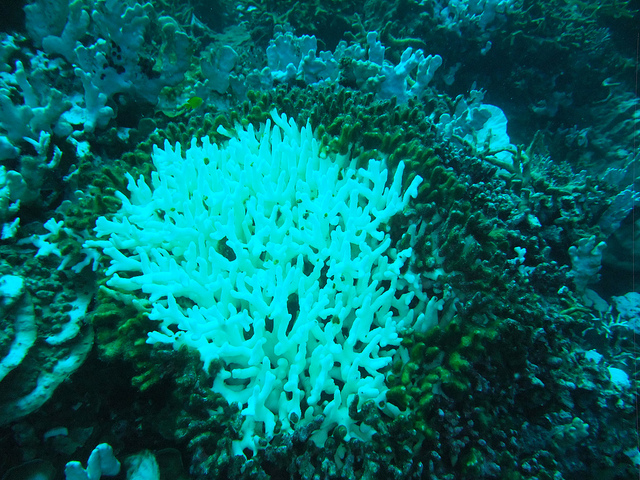Report on Marine Pollution in Australian Waters and Alignment with Sustainable Development Goals
Introduction: The Discrepancy Between Perception and Reality
A significant disparity exists between the popular perception of Australia’s oceans as pristine and the reality of widespread marine pollution. This report analyzes the scale of the issue, its sources, and its environmental impact, with a direct focus on its implications for achieving the United Nations Sustainable Development Goals (SDGs). The presence of anthropogenic debris, ranging from consumer waste to industrial materials, highlights a critical challenge to marine conservation efforts.
SDG 14: Life Below Water – The Core Challenge
The health of Australia’s marine ecosystems is under direct threat from pollution, undermining the core objectives of SDG 14 (Life Below Water). This goal, particularly Target 14.1, which aims to prevent and significantly reduce marine pollution of all kinds by 2025, is severely compromised by current conditions.
Evidence of Marine Debris
Field observations by marine professionals and citizen scientists reveal a consistent and diverse presence of pollutants. Recent findings include:
- Consumer plastic items (e.g., bags, bottles, a replica Squid Game doll, a toilet brush)
- Discarded electronics (e.g., a drone)
- Historical artifacts (e.g., centuries-old glass bottles)
- Boating and fishing materials (e.g., buoys, nets)
Alex Blake, a marine biologist and dive instructor, confirms that this issue is not confined to urban harbors, reporting daily discoveries of plastic trash, including bags and bottles, as far as 60 kilometers offshore in the Great Barrier Reef. Such incidents, including the removal of a plastic bag from a sea turtle’s mouth, underscore the direct threat to marine fauna, a key concern of SDG 14.
Quantifying the Pollution Crisis
The scale of the problem is substantial. A joint study by Australia’s national science agency, CSIRO, and the University of Toronto estimates that up to 11 million tonnes of plastic pollution currently reside on the ocean floor. The research further indicates:
- An equivalent of one garbage truck’s worth of plastic enters the ocean every minute.
- Global plastic use is projected to double by 2040.
This escalating crisis presents a formidable obstacle to the sustainable management and protection of marine and coastal ecosystems, as mandated by SDG 14.2.
Land-Based Sources and Urban Responsibility: A Focus on SDG 11 and SDG 12
The majority of marine debris originates from land-based activities, linking the issue directly to SDG 11 (Sustainable Cities and Communities) and SDG 12 (Responsible Consumption and Production).
Urban Waste Management Failures
Tom Burd of the Sydney Institute of Marine Science (SIMS) explains that pollution pathways are often simple, stemming from overflowing bins, inadequately secured rubbish, and careless littering in public spaces. An incident at a reserve near Sydney’s Camp Cove, where over 300 individuals left a significant amount of litter after a party, exemplifies a failure in public responsibility and waste management. This directly contravenes SDG 11.6, which calls for reducing the adverse per capita environmental impact of cities, particularly concerning waste management.
Burd notes the long-term consequences: “I know deep down that there’s going to be rubbish down there forever amongst those boulders from that one night.” This highlights how irresponsible urban behavior creates permanent degradation in sensitive marine restoration sites.
Consumption Patterns and Single-Use Plastics
The prevalence of single-use plastics, such as “little soy sauce fishes,” points to a systemic issue with consumption patterns. This challenges the aims of SDG 12.5, which seeks to substantially reduce waste generation through prevention and reduction. Burd emphasizes individual responsibility, stating, “people need to be aware that every item they use in their everyday life has to go somewhere.”
The Intersecting Crisis: Climate Change and SDG 13
Marine pollution is compounded by the broader crisis of climate change, a central theme of SDG 13 (Climate Action). The ocean’s role as a climate regulator is being critically impaired.
Coral Bleaching and Ocean Health
The Great Barrier Reef has suffered its sixth widespread coral bleaching event since 2016, a direct consequence of rising ocean temperatures caused by climate change. Dr. Yolanda Waters, CEO of Divers for Climate, states, “Without the ocean, we would have burned alive by now. The ocean absorbs so much of that excess heat… It’s struggling.” This illustrates the urgent need for climate action to protect marine ecosystems, a key synergy between SDG 13 and SDG 14.
Collaborative Action and Hope: The Role of SDG 17 and SDG 4
Despite the scale of the crisis, collaborative efforts offer a pathway forward, embodying the principles of SDG 17 (Partnerships for the Goals) and highlighting the need for SDG 4 (Quality Education).
Citizen Science and Data-Driven Policy
Initiatives like PADI’s Dive Against Debris program exemplify effective multi-stakeholder partnerships (SDG 17.17). This citizen science program has achieved the following:
- Created the world’s largest underwater marine debris database.
- Removed and reported over 3.6 million pieces of plastic from the ocean.
- Freed more than 37,000 entangled marine animals.
The data collected by dive centers, such as Dive Centre Bondi, is used by the AWARE Foundation to advocate for policy changes. This has contributed to successes like Vanuatu’s ban on plastic bags and new single-use plastic policies in Manly, Sydney, demonstrating a tangible link between community action and policy reform.
The Importance of Education and Awareness
A recurring theme among experts is the “lack of education” regarding environmental responsibility. Professor Adriana Vergés of UNSW Sydney notes that public perception can lead to despair and inaction. She argues that highlighting successful restoration initiatives can inspire collective action. This aligns with SDG 4.7, which aims to ensure all learners acquire the knowledge and skills needed to promote sustainable development. By showcasing positive outcomes, such as the rapid recovery of restored underwater forests, motivation for broader public engagement can be fostered.
Conclusion: A Call for Integrated Action
The pollution of Australia’s oceans is a multifaceted problem that directly threatens the achievement of several Sustainable Development Goals, most notably SDG 14. Addressing it requires an integrated approach that combines responsible urban waste management (SDG 11), a shift towards sustainable consumption (SDG 12), urgent climate action (SDG 13), and enhanced public education (SDG 4). The success of collaborative partnerships (SDG 17) between scientific bodies, NGOs, businesses, and citizens provides a model for reversing environmental decline and securing a sustainable future for marine ecosystems.
Analysis of Sustainable Development Goals in the Article
1. Which SDGs are addressed or connected to the issues highlighted in the article?
-
SDG 14: Life Below Water
- The entire article is centered on the health of marine environments. It discusses plastic pollution in Sydney’s Harbour and the Great Barrier Reef, the direct impact on marine animals (e.g., a sea turtle with a plastic bag in its mouth, fish entangled in nets), and the degradation of marine habitats like kelp forests and coral reefs due to pollution and climate change-induced bleaching.
-
SDG 12: Responsible Consumption and Production
- The article directly addresses unsustainable consumption patterns as the root cause of plastic pollution. It mentions the prevalence of single-use plastics like “soy sauce fishes” and the problem of waste generated from careless activities, such as a party that “trashed the place and leave[d] rubbish everywhere.” It implicitly calls for a reduction in waste generation and more responsible consumer behavior.
-
SDG 13: Climate Action
- The article links the climate crisis to ocean health. It explicitly mentions that the Great Barrier Reef is “suffering from widespread coral bleaching” and quotes Dr. Yolanda Waters, who states, “The ocean absorbs so much of that excess heat that we’re causing because of burning fossil fuels.” This highlights the ocean’s role in climate regulation and the severe impacts of climate change on marine ecosystems.
-
SDG 11: Sustainable Cities and Communities
- The article highlights how land-based activities in urban areas directly impact the ocean. The journey of a toilet brush or litter from a “tipped-over bin” in Sydney to the ocean floor illustrates the connection between urban waste management and marine pollution. The incident at Camp Cove near Sydney is a clear example of the adverse environmental impact of human activities in a city.
-
SDG 4: Quality Education
- A “lack of education” is cited by Tom Burd of the Sydney Institute of Marine Science (SIMS) as a key reason for the littering problem. The article also discusses a public perception survey where 70% of Sydneysiders incorrectly believed water quality was worsening, indicating a gap in public knowledge. This points to the need for better education on environmental issues to foster responsible behavior.
-
SDG 17: Partnerships for the Goals
- The article showcases multiple collaborations aimed at tackling the problem. These include partnerships between scientific institutions (CSIRO, SIMS, UNSW), non-governmental organizations (PADI AWARE Foundation, Divers for Climate), and private sector/civil society groups (Dive Centre Bondi). These groups work together on research, restoration projects, citizen science data collection, and policy advocacy.
2. What specific targets under those SDGs can be identified based on the article’s content?
-
Under SDG 14 (Life Below Water):
- Target 14.1: “By 2025, prevent and significantly reduce marine pollution of all kinds, in particular from land-based activities, including marine debris and nutrient pollution.” The article’s core theme is the fight against marine debris, from plastic bags and bottles to larger items, all originating from land-based human activities.
- Target 14.2: “By 2020, sustainably manage and protect marine and coastal ecosystems… and take action for their restoration.” The article discusses efforts by SIMS to restore underwater kelp forests and highlights the severe degradation of the Great Barrier Reef from coral bleaching, underscoring the need for protection and restoration.
- Target 14.a: “Increase scientific knowledge, develop research capacity and transfer marine technology…” The work of SIMS, CSIRO, and marine ecologists like Adriana Vergés in researching pollution, restoring habitats, and collecting data directly contributes to this target. The citizen science program “Dive Against Debris” is also a mechanism for increasing scientific knowledge.
-
Under SDG 12 (Responsible Consumption and Production):
- Target 12.5: “By 2030, substantially reduce waste generation through prevention, reduction, recycling and reuse.” The article’s call to “reduce those single-use plastics” and ensure proper waste disposal directly aligns with this target. The problem described is a failure of current systems and behaviors to meet this goal.
- Target 12.8: “By 2030, ensure that people everywhere have the relevant information and awareness for sustainable development and lifestyles in harmony with nature.” The article points to a “lack of consideration, lack of education” and public despair or apathy, highlighting the need to improve awareness and motivate collective action, which is the essence of this target.
-
Under SDG 13 (Climate Action):
- Target 13.3: “Improve education, awareness-raising and human and institutional capacity on climate change mitigation, adaptation, impact reduction and early warning.” The work of “Divers for Climate” to “advocate for federal policy on climate action” and tell “frontline stories” about ocean changes serves this target. The reporting on coral bleaching acts as an early warning of climate impacts.
-
Under SDG 11 (Sustainable Cities and Communities):
- Target 11.6: “By 2030, reduce the adverse per capita environmental impact of cities, including by paying special attention to… municipal and other waste management.” The article provides direct examples of failures in waste management within Sydney, where litter from parks and bins ends up in the ocean, demonstrating the need to reduce the city’s environmental footprint.
3. Are there any indicators mentioned or implied in the article that can be used to measure progress towards the identified targets?
-
For Target 14.1 (Reduce Marine Pollution):
- Explicit Indicator: The article mentions that the “Dive Against Debris” program has “removed and reported over 3.6 million pieces of plastic from the ocean.” This number serves as a direct indicator of debris removal efforts.
- Explicit Indicator: The CSIRO study determined there are “up to 11 million tonnes of plastic pollution sitting on the ocean floor.” This provides a baseline measurement of existing pollution.
- Implicit Indicator: The types and frequency of items found (e.g., “plastic bottles,” “plastic bags,” “soy sauce fishes”) during clean-up dives serve as an indicator of the composition of marine debris.
-
For Target 14.2 (Protect and Restore Ecosystems):
- Explicit Indicator: The article states the Great Barrier Reef suffered its “sixth [widespread coral bleaching event] since 2016.” The frequency and extent of bleaching events are key indicators of ecosystem health and stress.
- Implicit Indicator: The progress of SIMS’s work in “restoring underwater forests” can be measured by the area of kelp forest successfully restored over time.
- Explicit Indicator: The “Dive Against Debris” program has “released more than 37,000 entangled marine animals.” This number is an indicator of direct intervention to save wildlife from pollution.
-
For Target 12.8 (Promote Awareness):
- Explicit Indicator: A survey found that “70 per cent of people thought [water quality] was getting worse.” Public perception surveys like this are an indicator of the level of public awareness and education on environmental topics.
-
For Target 14.a (Increase Scientific Knowledge):
- Implicit Indicator: The creation of the “world’s largest underwater marine debris database” by PADI and the AWARE Foundation is an indicator of increased research capacity and data collection. The volume and richness of this data measure progress.
4. Table of SDGs, Targets, and Indicators
| SDGs | Targets | Indicators Identified in the Article |
|---|---|---|
| SDG 14: Life Below Water |
14.1: Reduce marine pollution from land-based activities.
14.2: Protect and restore marine and coastal ecosystems. 14.a: Increase scientific knowledge and research capacity. |
– Amount of plastic pollution on the ocean floor (estimated at 11 million tonnes). – Number of plastic items removed and reported by citizen scientists (3.6 million pieces). – Frequency of coral bleaching events (sixth widespread event since 2016). – Number of entangled marine animals released (37,000). – Area of restored underwater forests (kelp). – Creation and size of the underwater marine debris database. |
| SDG 12: Responsible Consumption and Production |
12.5: Substantially reduce waste generation.
12.8: Ensure people have information and awareness for sustainable lifestyles. |
– Prevalence of single-use plastics (e.g., “soy sauce fishes”) found as litter. – Public perception of environmental issues (e.g., 70% of people incorrectly thought water quality was worsening). |
| SDG 13: Climate Action | 13.3: Improve education and awareness-raising on climate change. |
– Number of ocean-focused climate advocacy groups (mentioned as only three in Australia). – Use of frontline stories from divers to advocate for policy change. |
| SDG 11: Sustainable Cities and Communities | 11.6: Reduce the adverse per capita environmental impact of cities, including waste management. |
– Incidents of large-scale littering in urban public spaces (e.g., the party at Camp Cove). – Presence of urban waste (e.g., toilet brush, drone) in marine environments. |
| SDG 17: Partnerships for the Goals | 17.17: Encourage and promote effective public, public-private and civil society partnerships. | – Existence of collaborations between scientific institutions (SIMS, CSIRO), NGOs (PADI, Divers for Climate), and civil society/private sector (Dive Centre Bondi). |
Source: au.rollingstone.com







